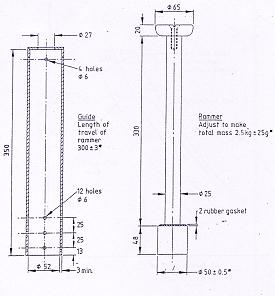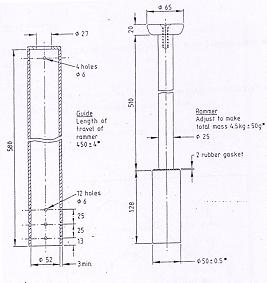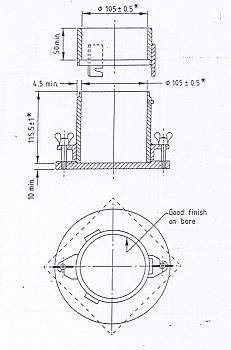Standard Proctor Compaction Test is used to determine the maximum
dry unit weight of compaction for soils. This test is carried out
accordance to BS 1377 : Part 4 :1990. During earthwork stage of
construction, compaction of soils is necessary to improve its
strength. Proctor (1933) developed this Standard Proctor Compaction
Test for determination of maximum dry density for soils which can be
used for specification of field compaction.
Soil sample would be collected from site and sieved to determine
which type of Compaction Test is suitable. During the
compaction test, the soil sample is compacted in mould by using a
rammer. For Standard Proctor test, this step is carried out
using a 2.5kg ram and soil is compacted in 3 equal layers while for
Modified Standard Proctor test, this step is carried out
using a 4.5kb ram and soil is compacted in 5 equal layers. This step
will be repeated few times with a different moisture content added
to obtain a series of data
The
dry densities obtained in a series of determinations shall be
plotted versus moisture contents, W. A smooth curve shall be drawn
through the resulting points and the position of the maximum on this
curve with the corresponding moisture content shall be determined.
The
dry density corresponding to the maximum point on the moisture
content versus dry density curve shall be reported as the maximum
dry density.
 2.5kg Rammer
2.5kg Rammer
4.5kg Rammer

 1L Mould
1L Mould